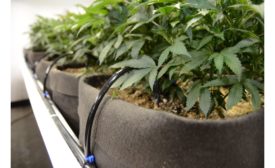Ingredients
CANNABIS PRODUCTS | MARCH 2020
Smaller batch treatment system has capacity of 250 pound per hour.
Read More
CANNABIS PRODUCTS | MARCH 2020
Achieving cannabinoid consistency in food and beverage products
From raw ingredients to the end product, maintaining accurate cannabinoid content is crucial for developing safe, compliant cannabis foods and beverages.
May 15, 2020
Never miss the latest news and trends driving the food safety industry
eNewsletter | Website | eMagazine
JOIN TODAY!Copyright ©2025. All Rights Reserved BNP Media.
Design, CMS, Hosting & Web Development :: ePublishing











